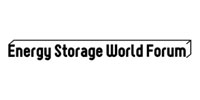 In order to meet growing demand for lithium ore, the global lithium industry will require at least $10–12 billion in investments over the next decade — primarily due to rising demand for plug-in electric vehicles — the Chile-based lithium mining firm SQM has reported.
In order to meet growing demand for lithium ore, the global lithium industry will require at least $10–12 billion in investments over the next decade — primarily due to rising demand for plug-in electric vehicles — the Chile-based lithium mining firm SQM has reported.
Relating to those figures, the senior commercial vice president at SQM, Daniel Jimenez, also noted that lithium demand was expected to grow by a further 600,000–800,000 tonnes of lithium carbonate equivalent over just the next 10 years or so.
Those comments were made at the recent Metal Bulletin Battery Materials Conference in Shanghai, and represent a substantial increase in (projected) demand.
Reuters provides some further information: “SQM’s projection is based on typical greenfield capital expenditure per tonne of lithium carbonate equivalent, he adds, noting that the industry has historically underestimated lithium demand and over-estimated supply.
“Company currently has annual lithium carbonate production capacity of 48,000 tonnes in Chile, which it will expand to 70,000 tonnes this year and to 100,000 tonnes next year, Jimenez says.”
This news follows on the recent announcement that authorities in Chile have approved $754 million in new lithium mining investments in the country.
read more
 JOHANNESBURG
JOHANNESBURG “Will anything match lithium-ion batteries for energy density?” is a frequently repeated question. It’s certainly not in the cards in the next few years. But the
“Will anything match lithium-ion batteries for energy density?” is a frequently repeated question. It’s certainly not in the cards in the next few years. But the  According to the new market research report “Battery Energy Storage System Market by Element (Battery, Hardware), Battery Type (Lithium-Ion, Advanced Lead Acid, Flow Batteries, Sodium Sulfur), Connection Type (On-Grid And Off-Grid), Ownership, Application, and Geography – Global Forecast to 2023“, published by MarketsandMarkets™, the market is expected to grow from
According to the new market research report “Battery Energy Storage System Market by Element (Battery, Hardware), Battery Type (Lithium-Ion, Advanced Lead Acid, Flow Batteries, Sodium Sulfur), Connection Type (On-Grid And Off-Grid), Ownership, Application, and Geography – Global Forecast to 2023“, published by MarketsandMarkets™, the market is expected to grow from  Cypress Creek Renewables, which developed
Cypress Creek Renewables, which developed  Battery storage’s emergence as a tool to boost grid reliability and a viable project finance opportunity is good news for utilities and grid operators, said Moody’s Investor Service in an infrastructure and project report on March 19.
Battery storage’s emergence as a tool to boost grid reliability and a viable project finance opportunity is good news for utilities and grid operators, said Moody’s Investor Service in an infrastructure and project report on March 19. The
The  The promise of a global electric vehicle transformation has a looming problem.
The promise of a global electric vehicle transformation has a looming problem.
Recent Comments